We will see in this article how to apply the Donuts theory to the attractiveness of a territory. Let’s start by explaining the Donuts theory invented by Kate Raworth, that would be a good start.
Apply the Donuts theory to the attractiveness of a territory
Apply the Donuts theory to the attractiveness of a territory
Donut offers a vision of what it means for humanity to thrive in the 21st century and Donut Economics explores the mindset and thought patterns needed to make it happen.
First published in 2012 in an Oxfam report by Kate Raworth, the concept quickly gained traction internationally.
Kate’s 2017 book, « Donut Economics: Seven Ways to Think Like a 21st Century Economist, » further explored the economic thinking needed to bring humanity into the Donut, bringing together insights from diverse economic perspectives from a way that everyone can understand.
Find in the 2018 Ted X video, a brief summary of the Donuts theory.
Because we also have to rethink the images that we associate with the economy, Kate Raworth chose to give this jumpsuit the shape of a donut. Its central ring represents a « just and safe space for humanity » where the needs of all are met, within the limits of the capacities of the planet, continues the one who officiated for several years for the NGO which fights against poverty Oxfam.
On one side – and this is what delimits the upper part of the pastry – is the “ecological ceiling”, which is measured by global warming, the loss of biodiversity, etc.
On the other – and this is the lower limit of the ring – are the minimum social objectives such as access to health, food or education.
The economist then proposes seven ways (the list is not exhaustive) of thinking about the economy in the 21st century, which range from the end of the obsession with growth to the understanding of human nature (which is not this rational economic individual portrayed for ages), passing through a broader look at the economy by inscribing it in society and in nature.
The donut principles, the social floor and the environmental ceiling
Apply the Donuts theory to the attractiveness of a territory
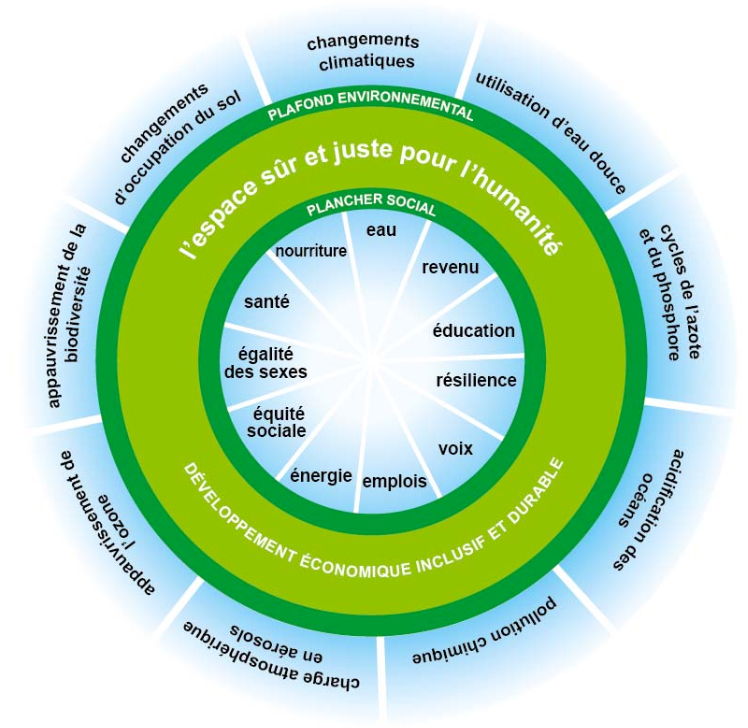
Think of it as a compass for human prosperity in the 21st century, whose goal is to meet the needs of all within the means of the planet.
It consists of two concentric rings:
- A social foundation – to make sure no one misses the basics of life.
- An ecological ceiling – to ensure that humanity does not collectively exceed planetary boundaries.
Between these two borders lies a doughnut-shaped space that is both ecologically safe and socially just – a space in which humanity can thrive.
1. The social foundation – below which lies critical human deprivation
2. The ecological ceiling – beyond which lies critical planetary degradation
These two boundaries are fundamental in the sense that humanity should always seek to avoid critical human deprivation and critical planetary degradation. But the best way to define their specific dimensions and measure their current state against desired outcomes will continue to evolve over time.
The image below reveals the current state of humanity and our planetary home: think of it as humanity’s “selfie” at the start of the 21st century.
Each dimension is measured, if possible, with 1 or 2 indicators, and the red corners show the extent of the Donut’s lack and overstepping of social and planetary boundaries.
This shows us that millions of people are still below the 12 social dimensions, and that humanity has already crossed at least four planetary boundaries (air pollution and chemical pollution are currently not quantified).
To achieve the 21st century goal of meeting the needs of all within the means of the living planet, all red must be removed from the Donut diagram, and it must be done on both sides at the same time.
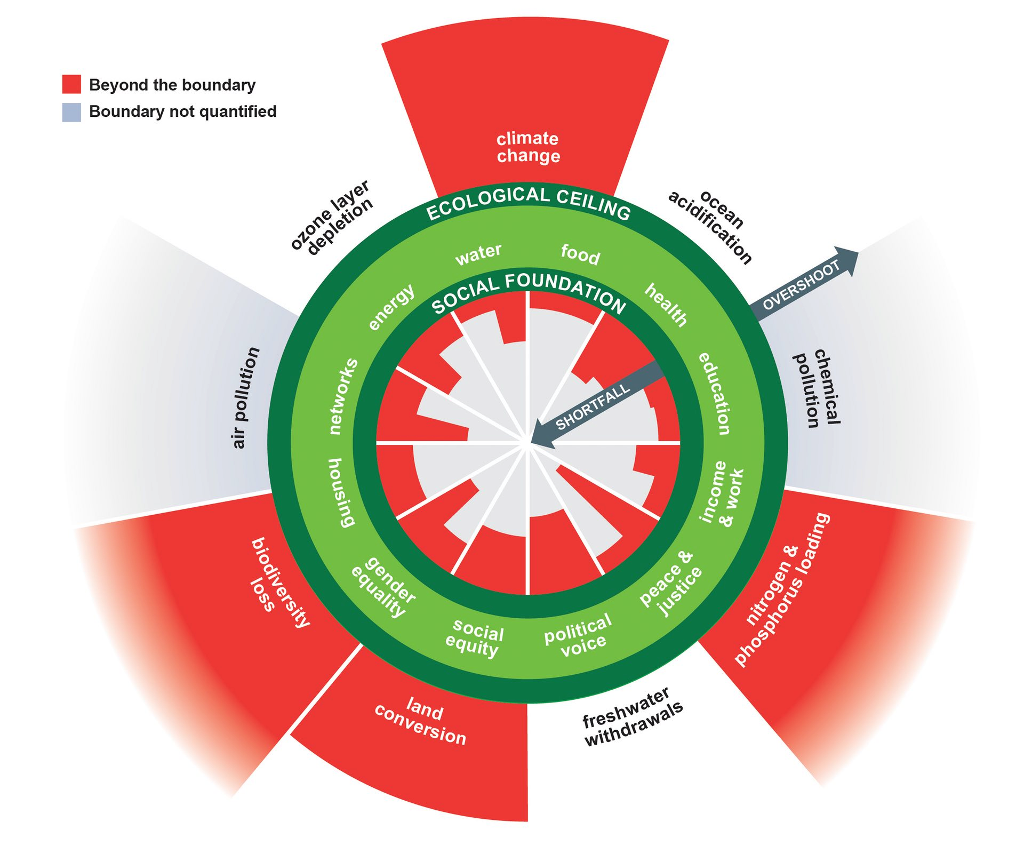
French donuts
Apply the Donuts theory to the attractiveness of a territory
The Donut (“Donut”) was used by the Minister of the Environment in the State of the Environment Report (“SoE”) in 2019: « Also, after having presented the environmental situation of France in 2019 (part 1) and completed this diagnosis with regard to planetary ecological issues (part 2), this report proposes to use the concept of the Donut as an additional analysis grid of the interactions between human needs and respect for the environment. »
The University of Leeds offers a comparative tool for the analyzes made by country. You can find this tool on their website
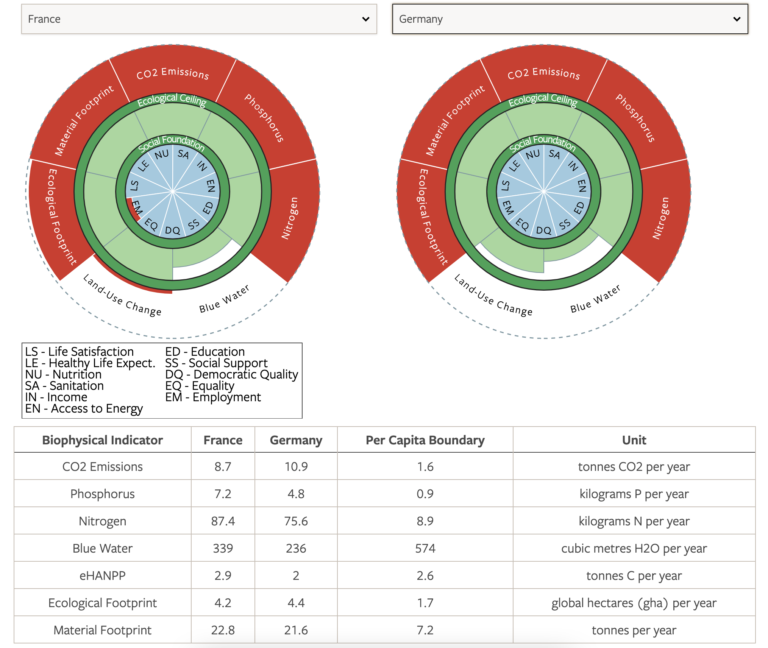
The integration of the Donuts theory in the Attractiveness Canvas
Apply the Donuts theory to the attractiveness of a territory
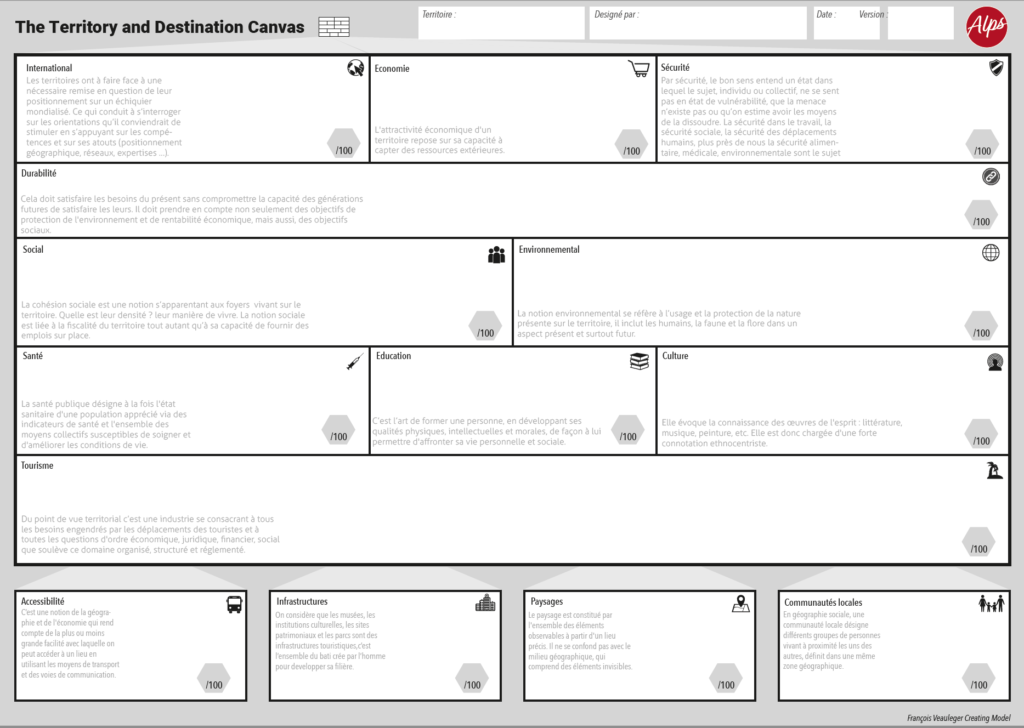
With these new elements from the Donuts economic model, we can already imagine a new improved version of the attractiveness canvas and the territory and destination canvas.
In order to fill it more easily, we can start with the common elements.
In the social floor:
- Water can be integrated into the ecology
- Returned to monetary value but an adaptation will be necessary
- Education to Education (Territory canvas)
- Resilience to Environmental (Territory canvas)
- Voice to Social (Territory canvas)
- Jobs at Social (Territory canvas)
- Energy to Ecology
- Social Equity at Social (Territory canvas)
- Gender equality at Social (Territory canvas)
- Health to Health (Territory canvas)
- Food, nowhere, this element will be created in a new version of the canvas
In the environmental ceiling it becomes more complicated because these elements are indicators that can only be integrated into the environmental and ecology attributes of the canvas:
- Climatic changes
- Use of fresh water
- Nitrogen and phosphorus cycles
- Ocean acidification
- chemical pollution
- Atmospheric Aerosol Load
- Ozone depletion
- Biodiversity loss
- Land cover change
However, they can easily be used to feed a diagnosis of the territory so as to apprehend the territorial works from the analysis phase.
Even if for the moment the canvases are not yet adapted to accommodate them, it will be interesting to recover the measurements.
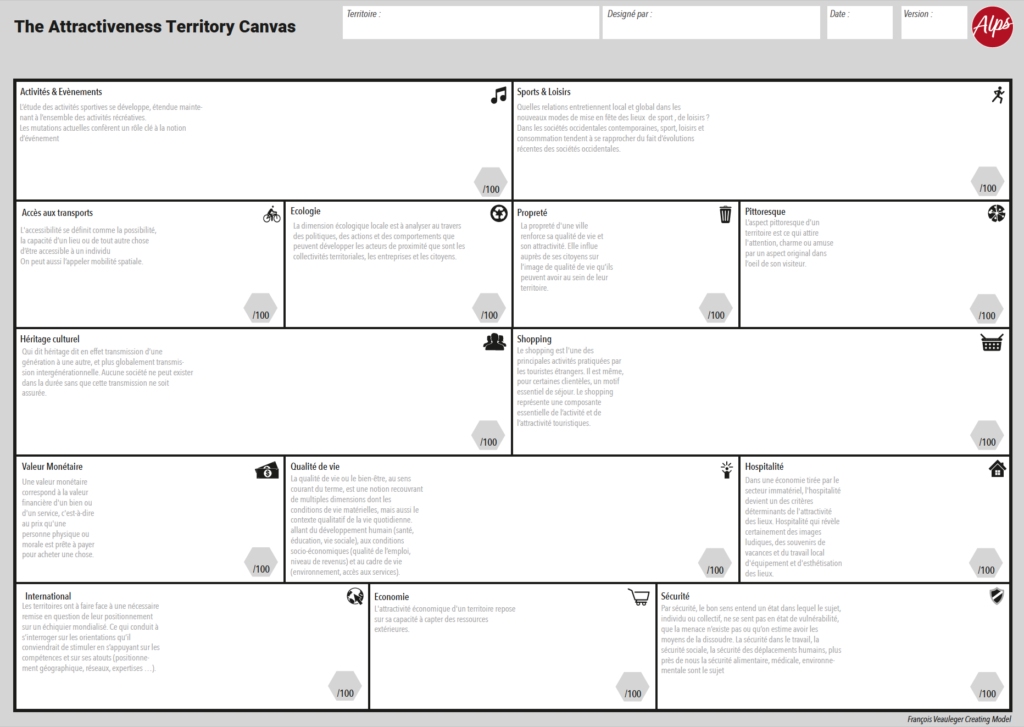
In conclusion
Apply the Donuts theory to the attractiveness of a territory
In sum, Kate Raworth’s Theory of Donuts is largely compatible with the diagnostic work of the Attractiveness Canvas. A real alternative to the economy that has been in place for 150 years, it offers renewal and a goal of resilience at any scale of territory.
We will therefore offer you, in a few days, an update of the Canvases allowing you to integrate the theory of Donuts.
Go visit the Dounught Economy website
Find information on Donuts Friday and B Corp labeled companies
The Alps agency accompanies throughout the year a good number of territories in their strategies or their reflections that make the difference. Do you want to know our references? Contact us
You wish to organize a conference on this theme, contact us too, we will analyze your needs together.
You can read all the other articles of the Alps Agency in the Blog section and discover all the services we can offer you.
This article was written by François Veauleger


